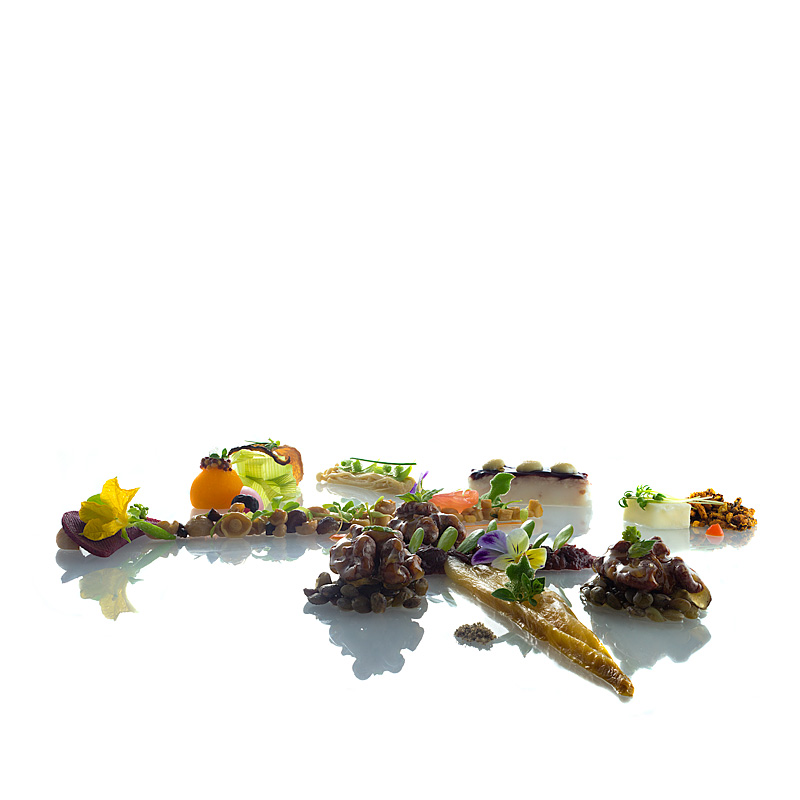
A couple years ago when making the White Bean dish, I counted up the components (22) and convinced myself I needed help completing everything. Several dishes and months later, I counted up the components for this dish (26) and convinced myself I wanted to do it on my own.
You can really tell how I’ve matured here.
There were scant new technical challenges on this one, but this is offset by the sheer scale of it. A fair bit of its complexity lies in the timing of everything. Many components don’t stand up well to sitting in a fridge (or at room temperature) overnight, so there’s a chain of dependency here that I had to figure out to get it all on the plate at once. This took reading through the recipe a dozen or so times, trying to find the things that would stay vital the longest and starting with them.
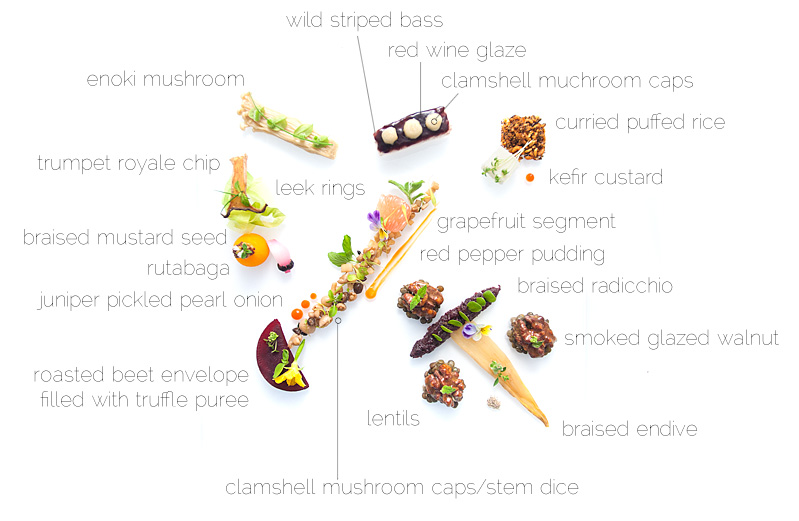
One of the first things was slicing some King Trumpet mushrooms into thin slices, brushing them with oil, roasting them at high temperature briefly, the dehydrating them for about a day to yield very crispy mushroom ‘chips’.
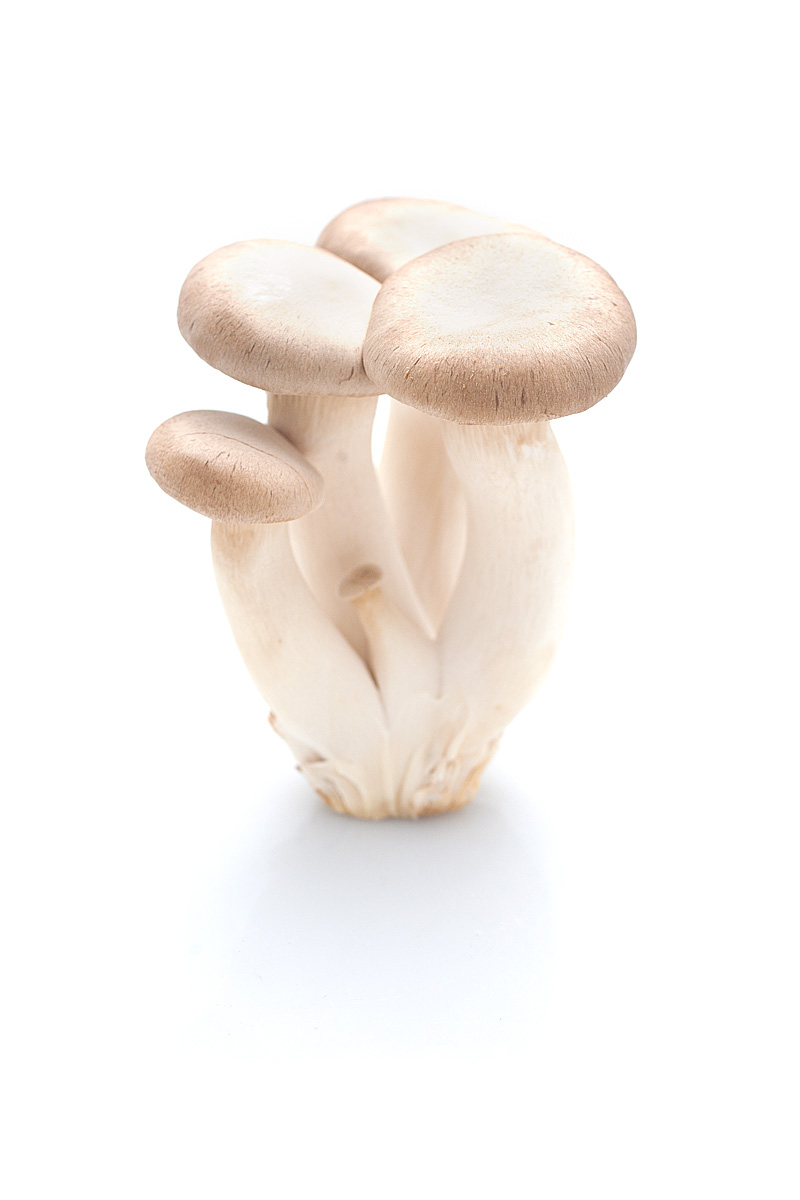
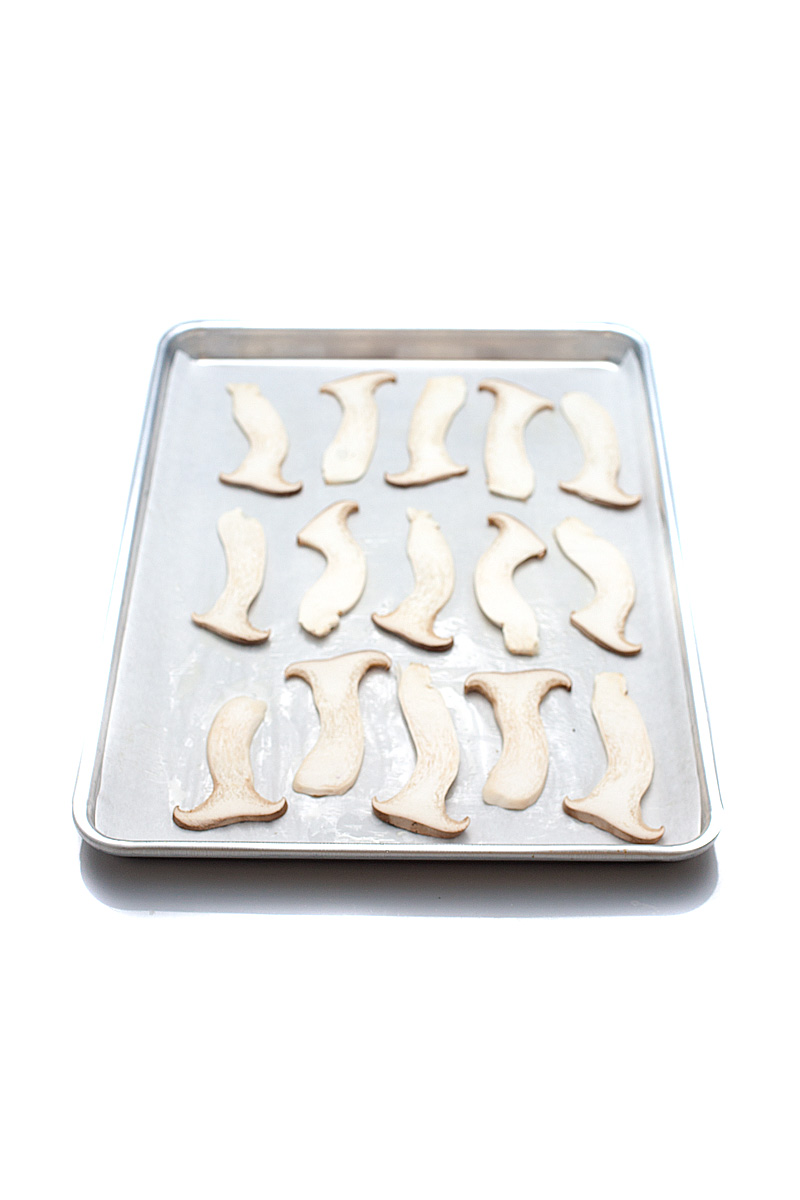
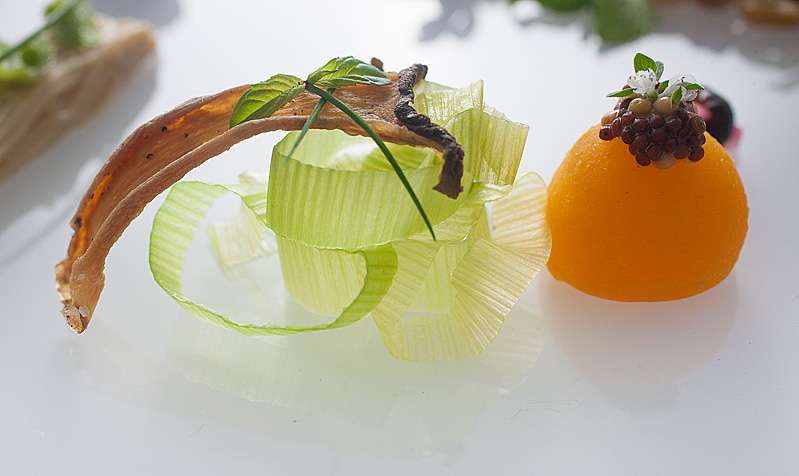
At the same time, I brought equal parts sugar, water, and white wine vinegar to a boil with some juniper berries, then poured this pickling mixture over some pearl onions and let them steep for a couple days.
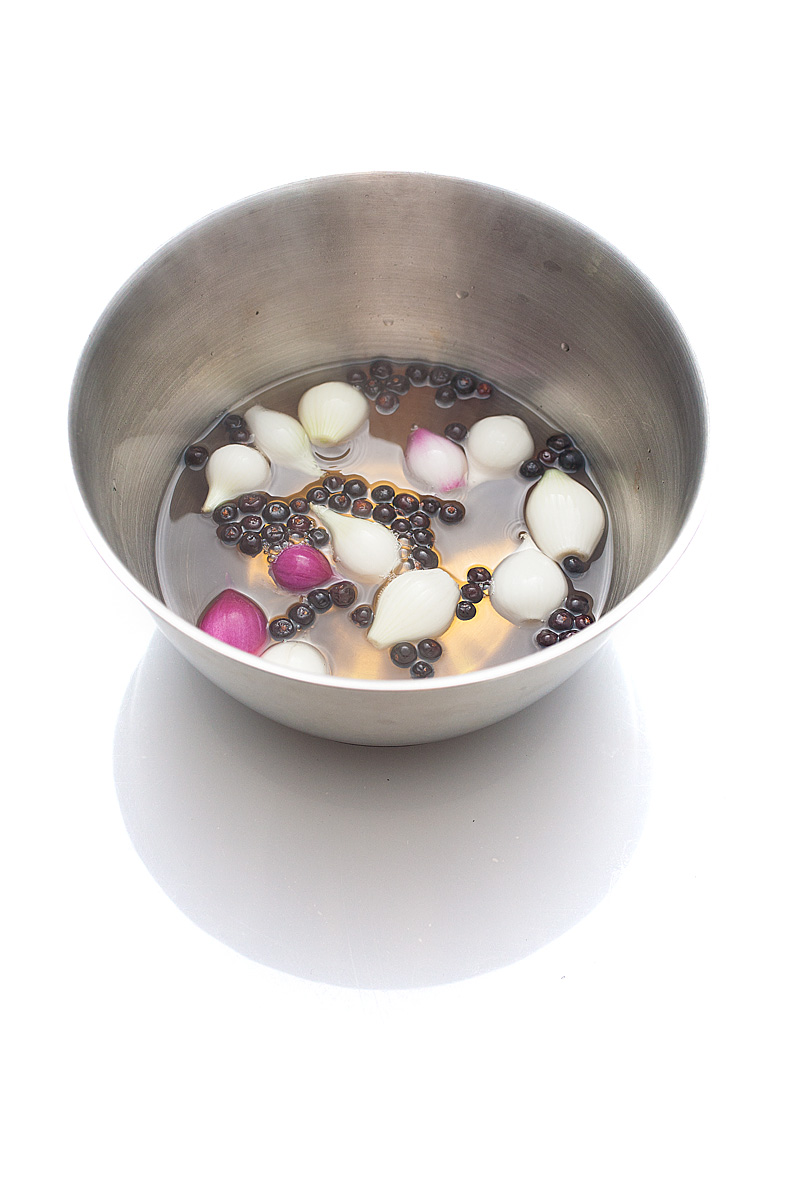
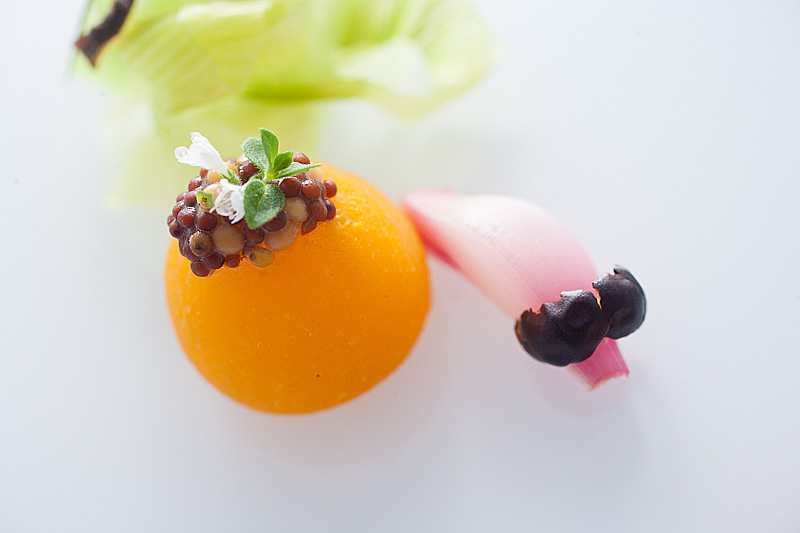
Making Curried Puffed rice was…remarkably fun and easy. I bought some wild rice and chucked a fistful of it into hot oil. The oil has to be FUCKING HOT: 450F or so, otherwise the rice just sits and browns. It needs to be so shockingly hot that the tiny bit of absorbed environmental humidity in the rice immediately vaporizes, exploding outwards before getting trapped in the starch of the rice, causing the grains to puff. I then tossed them with some curry powders and salt.
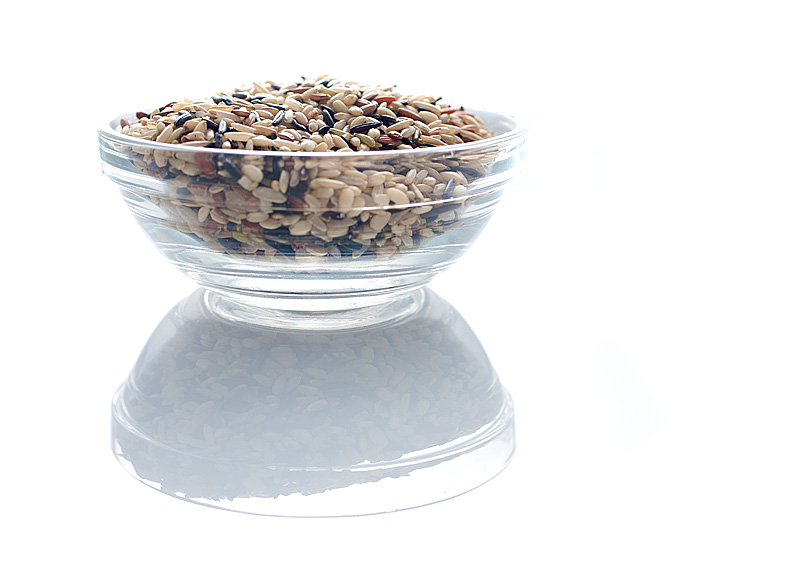
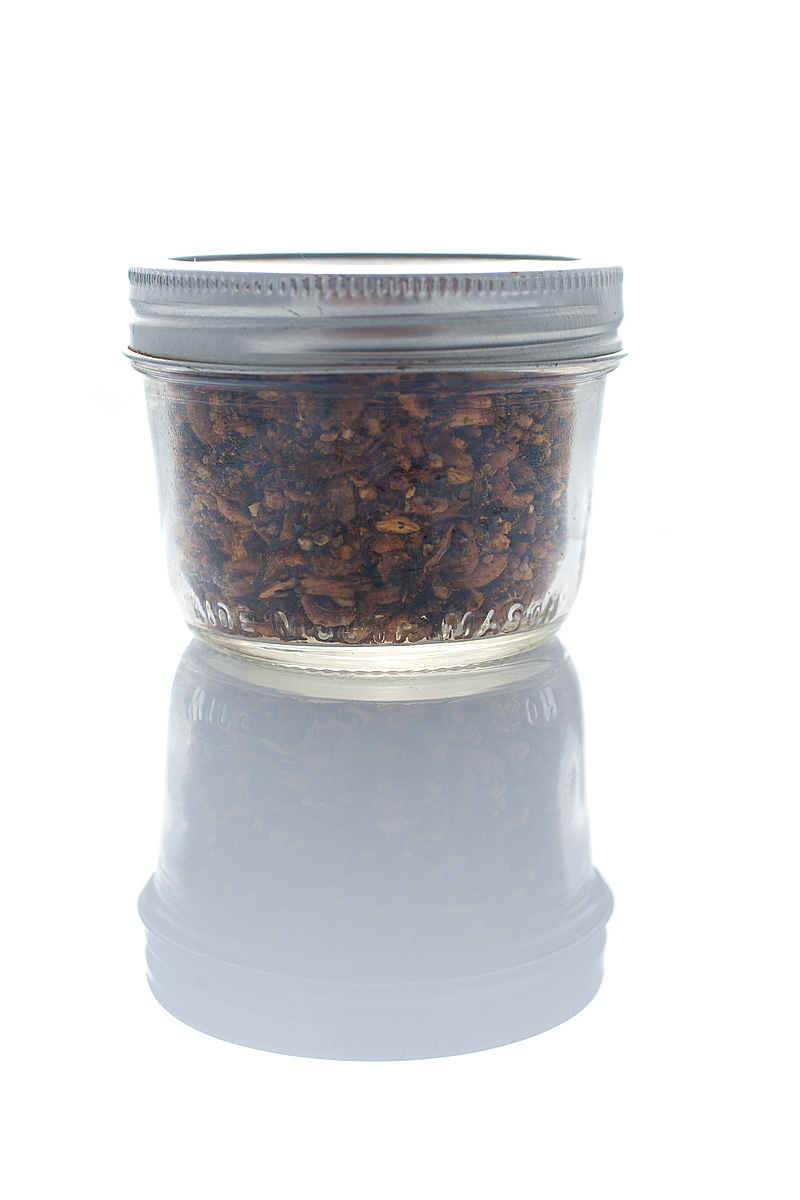
Making Red Pepper Puree was next up; these agar-based purees so-frequently featured in the book stay remarkably stable for quite a long time (which I’ve discovered by forgetting about squeeze bottles of smoke gel or yuzu pudding in my fridge until a month or so later). I juiced about 8 red peppers, simmered the juice to thicken it, added some cayenne, salt, and sugar to season it, then gelled it with agar before pureeing it.
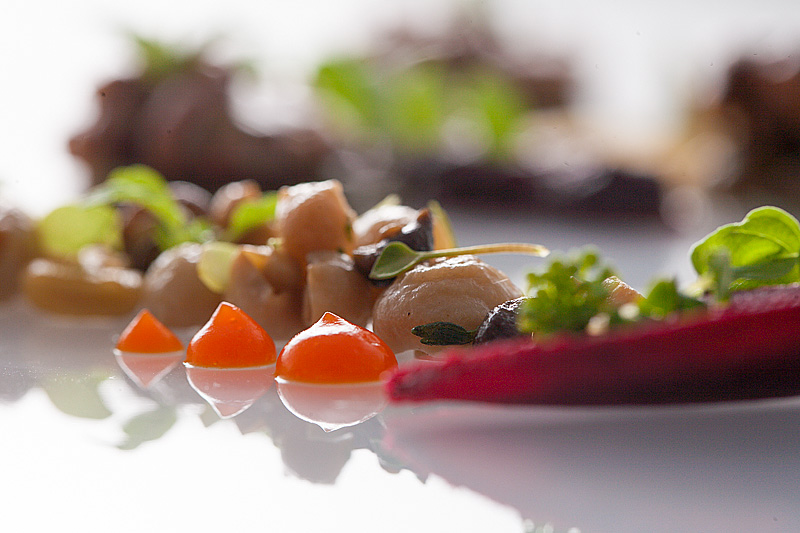
The Curried Puffed Rice and some of the Red Pepper Pudding are paired with Kefir Custard. While I’d heard the word “kefir” before, I had no idea what it actually was and had never tasted it (which is always the part of a recipe where I get real excited). Kefir is kinda fascinating: there are these things called Kefir Grains that are collections of yeast and bacteria hangin’ out and being all chummy with each other. These grains are added to milk, which triggers a fermentation of the milk and produces more of the grains. The milk itself is what’s referred to as “kefir”. It looks and tastes like something halfway between cream and yogurt, with a sharp tang and a thick consistency.
For this dish, the Kefir is custardified with the help of Iota Carrageenan, with which the kefir is boiled then left to set until it firms up. It’s then cut into small 3/4″ cubes. The texture of the custard is dead-on ‘custardy’; soft and like a perfect creme brulee.
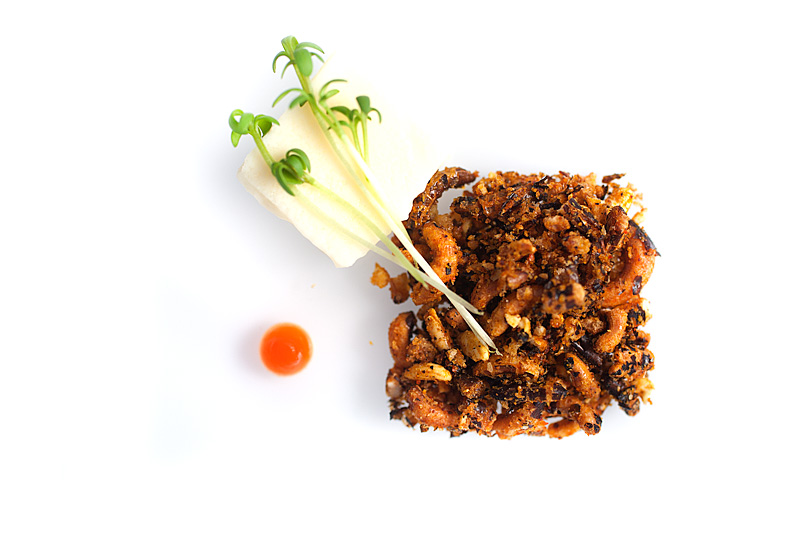
One of the more-involved components was Red Wine Glaze. This makes heavy use of the Veal Stock I made a few weeks ago, as well as some red wines (port and a dry red wine) cooked with dried blueberries and dried cherries to amp up the jammy flavors in it. The stock and red wine are independently thickened with a hefty bit of Ultra-tex 3, bringing them to a consistency somewhere around that of wallpaper paste. They’re then combined, to be spread thinly onto a sheet of acetate.
To do this, I laid down several strips of masking tape on my countertop (yielding a height of around 3mm or so), then put a sheet of acetate onto the countertop between them. I sprayed the acetate lightly with cooking spray to lubricate it, then I splatted a spoonful of the red wine ‘glue’ onto the acetate and dragged a ruler across to spread it super-duper thinly. The acetate sheet was transferred to the freezer on a tray to freeze. The idea is that later I’d cut small strips of the glaze, then transfer them to portions of bass and peel off the acetate, sort of like a red wine glaze sticker or something.
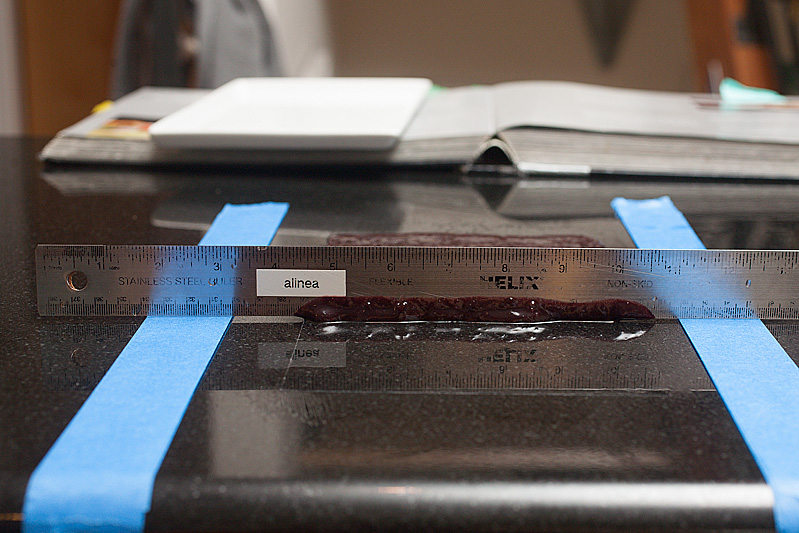
Making Glazed Smoked Walnuts was equally interesting: rather than smoking walnuts directly, I toasted some raw walnuts then glazed them with “smoke glaze”. This was made by combining walnut oil, some water, sugar, and smoked salt and cooking this to 320F. I found this fascinating: the water is a vehicle for the salt and sugar to dissolve (which they can’t do in the oil), but then the water itself boils off, leaving the flavor compounds from both in the oil. Bringing the mixture up to 320F is candy stage for sugar, but just under the threshold for caramelization so we only get the slightest of caramel notes. The walnuts are added when the temperature hits 320F, causing the overall temperature to plummet. The glaze thickens and hardens on the walnuts, forming a candy shell around them…a rich, walnutty, smoky-sweet candy shell. PRETTY COOL, ‘LINEA.
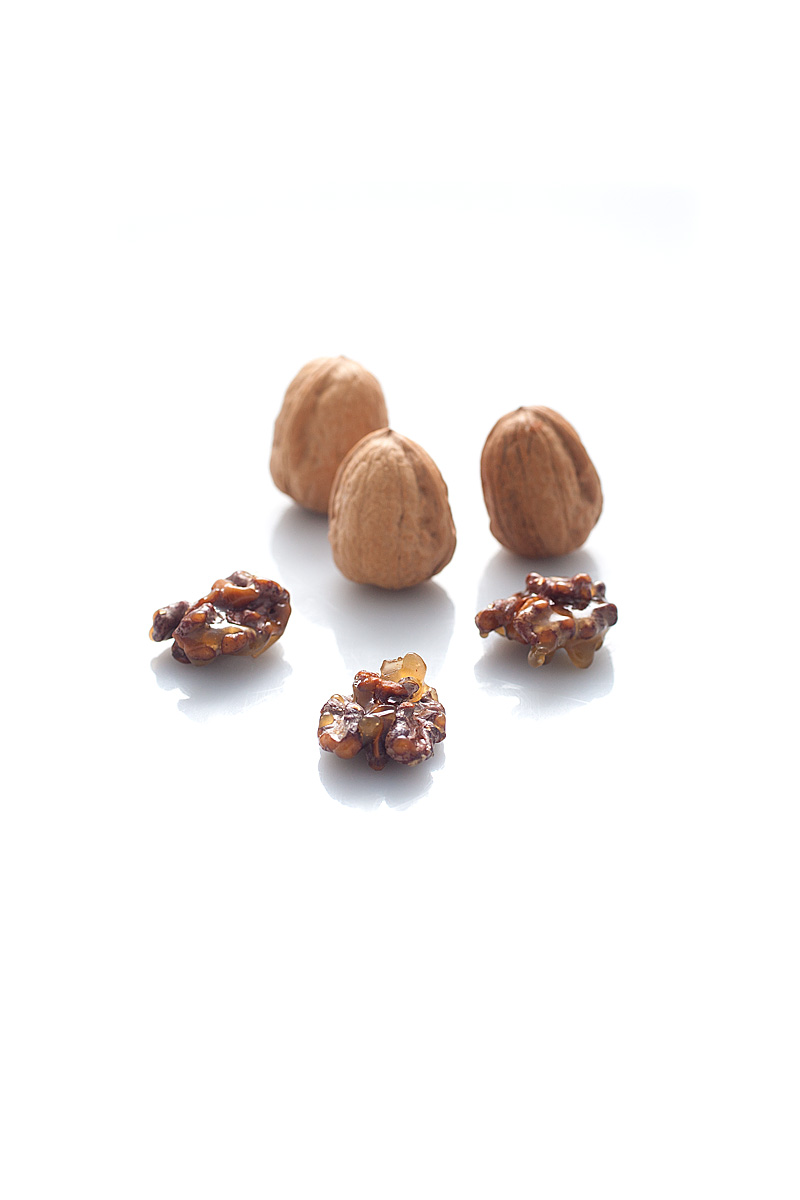
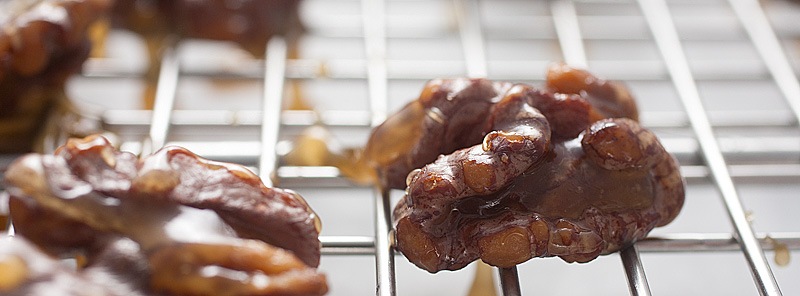
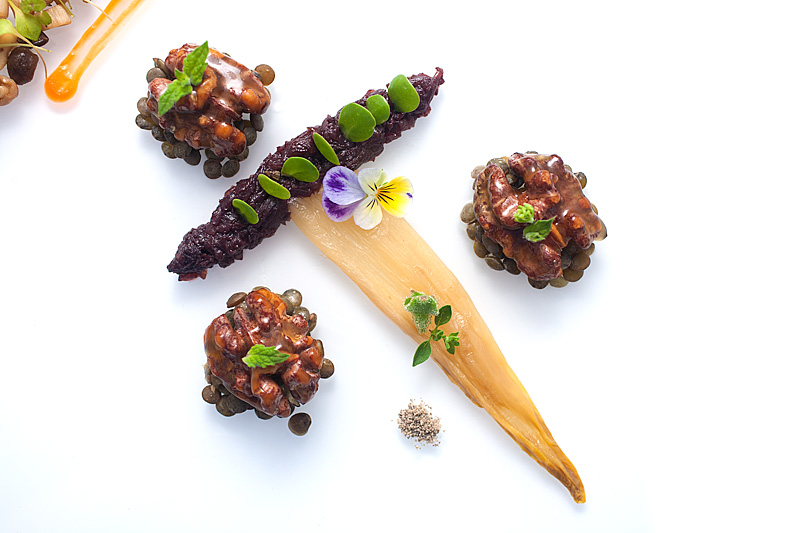
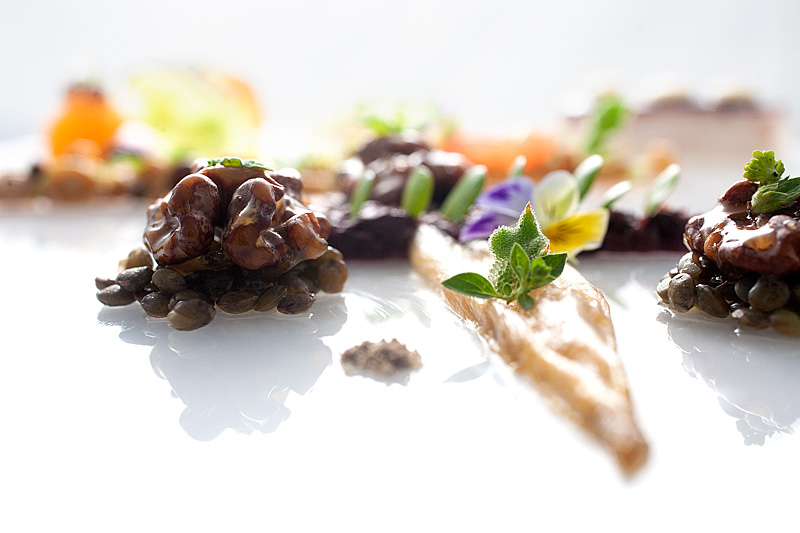
Sarah and I recently spent a weekend in Seattle (an adventure I’ll write more about later), and it seemed the restaurants there were really into serving braised mustard seeds. This is totally cool by me; I love them. Lightly-pickled and plumped, like little dots of tobiko but with some tang and zip, braising mustard seeds is pretty easy. I threw some brown and yellow seeds into a pot with some salt and water and simmered them for an hour or two (until they were plump and popped when I bit into them).
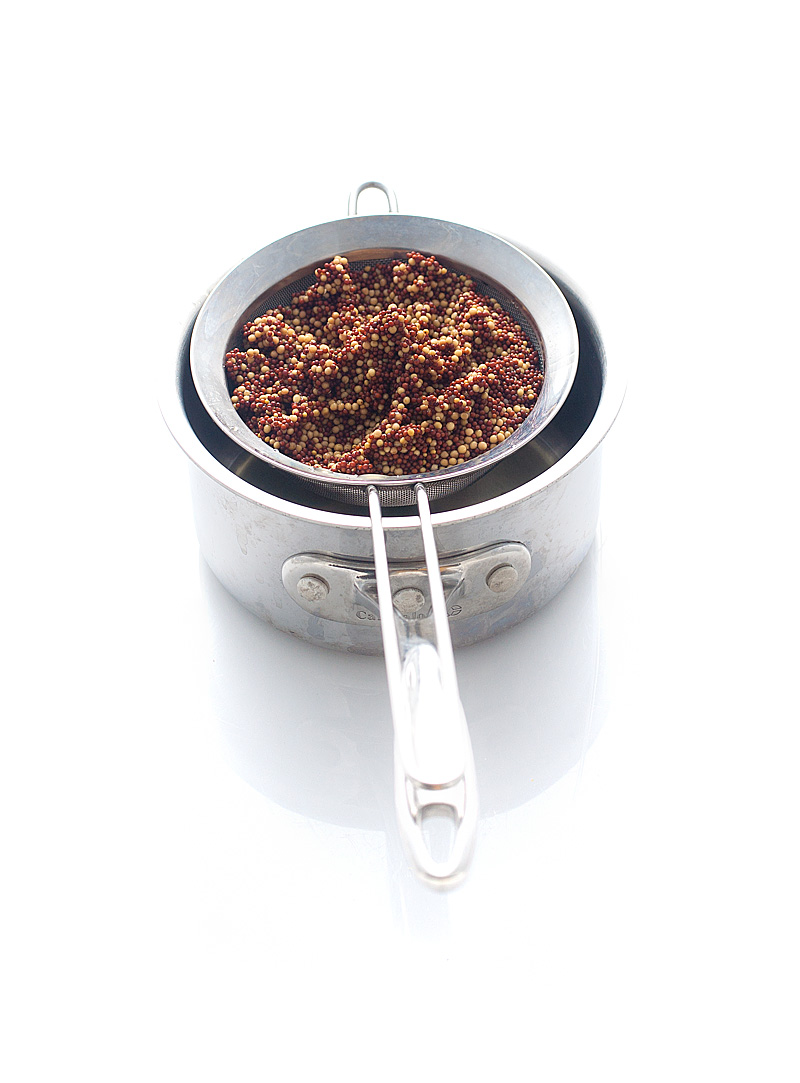
While the mustard seeds were braising, I braised several other things. Some Endive was braised with white wine, honey, lemon, butter, garlic, and rosemary until the leaves were very tender.
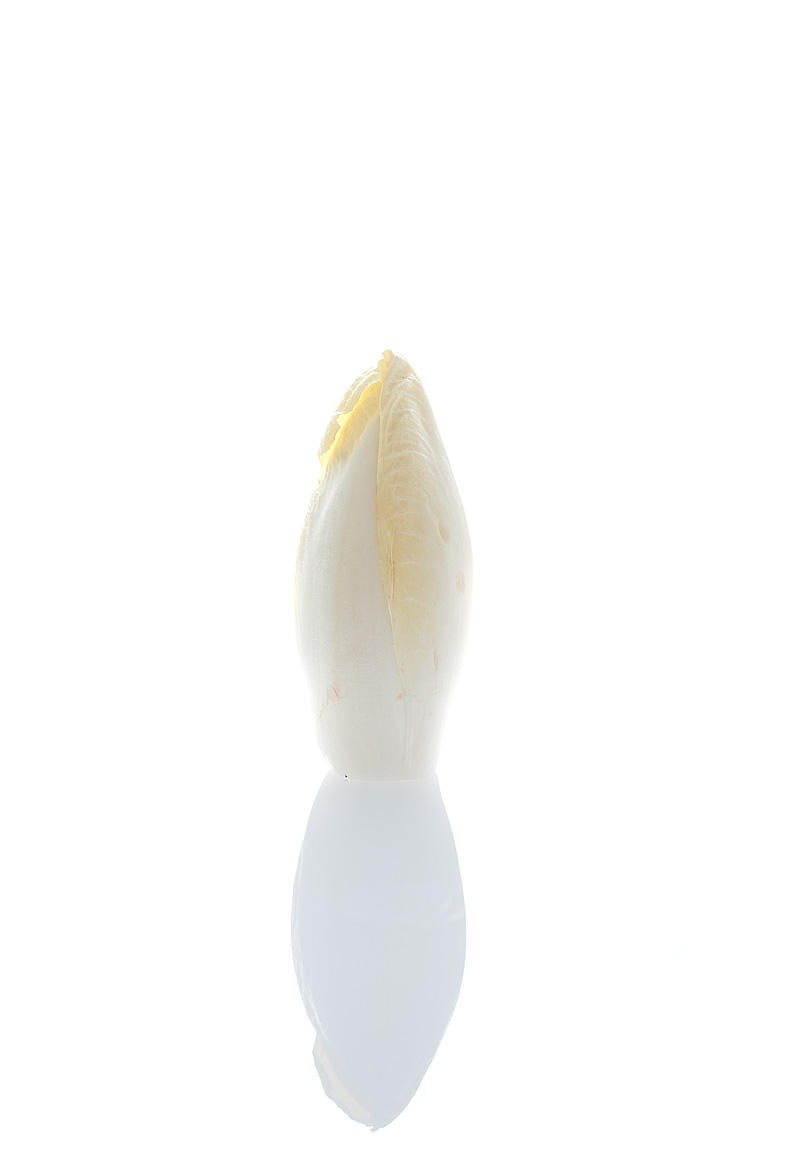
Radicchio was braised similarly, with red instead of white wines and a bit of vinegar to brighten it. After braising, the radicchio was finely-minced. Both of these guys were braised for 3-4 hours to soften their extreme bitterness.
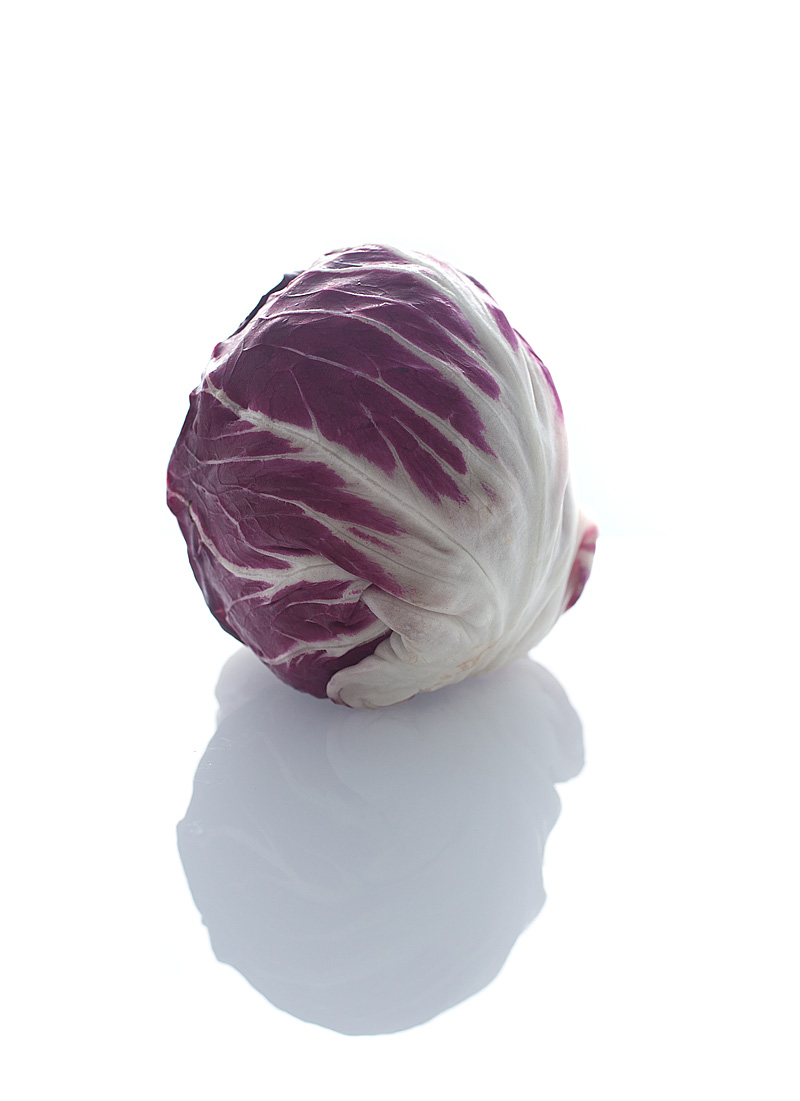
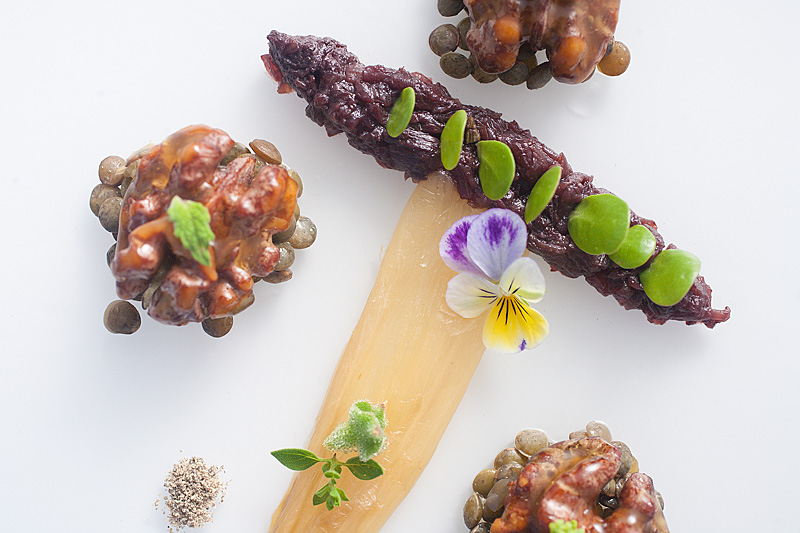
And, since I had one burner left, I braised some Rutabaga balls in white wine, vinegar, mustard and saffron. These were all sealed in a bag and cooked en sous vide for about an hour, until they were tender but still had some crunch to them.
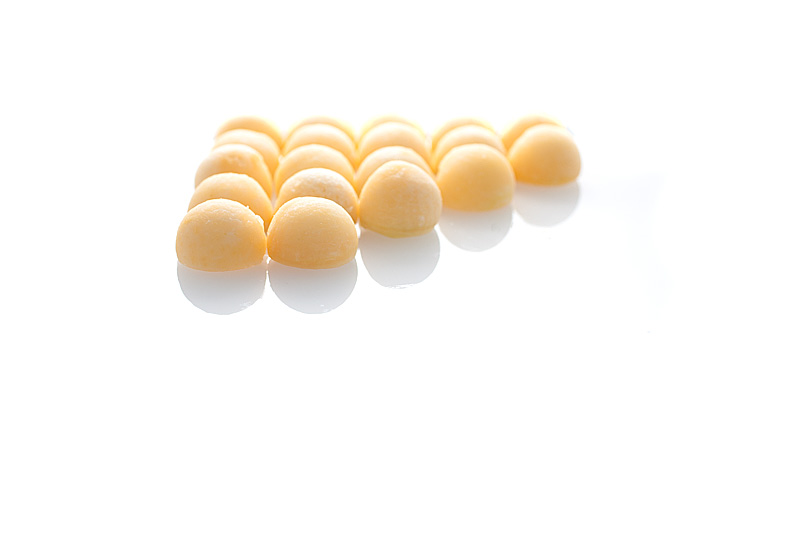
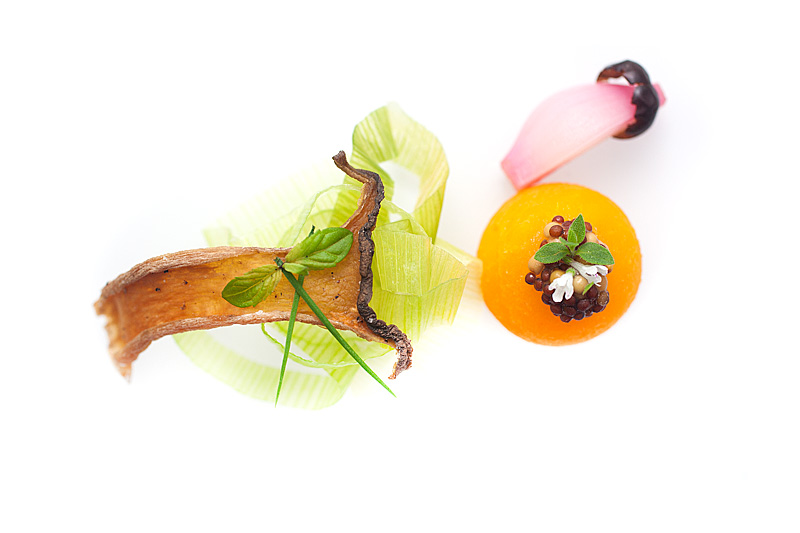
The last thing I made on the first cooking day was some green lentils, boiled simply with a bit of salt until they were lovely and tender. French green lentils have a pretty awesome, funky textured color pattern to them, don’t you think?
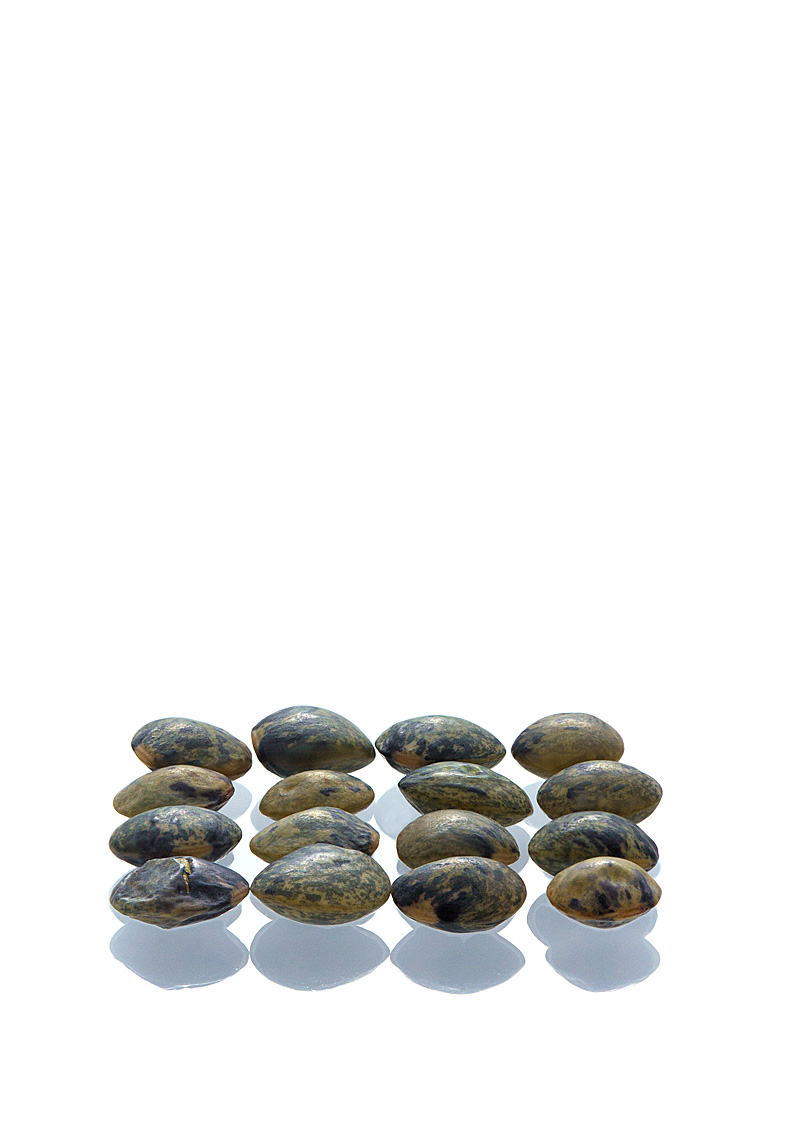
I then celebrated the day’s accomplishments with a delicious beer. When the mountains are blue, you know the beer is as cold as the Rockies. The helpful wide mouth really lets the nose on this one open up too. I dare you to find another beer with this kind of technology built in.
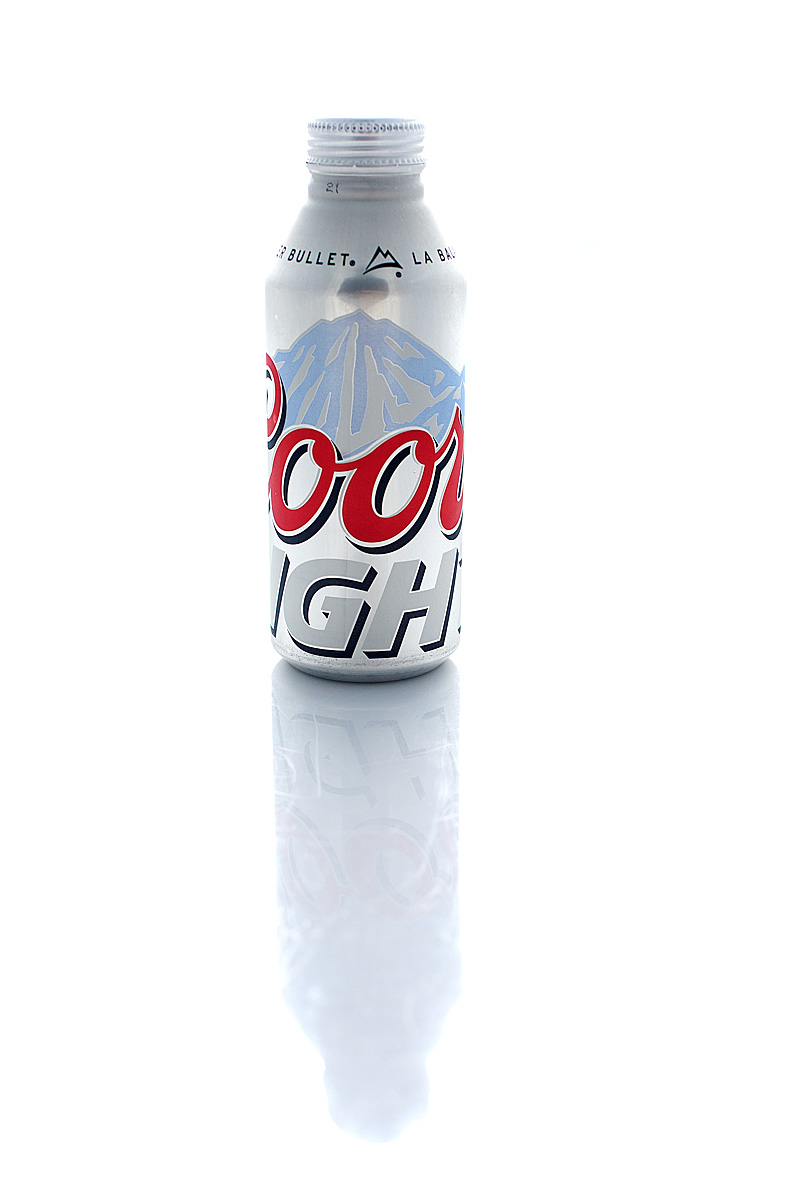
The next day, it was Get Busy Time. There were some fairly basic things to do, like slicing a Leek into discs, separating the discs into rings, and blanching the rings briefly.
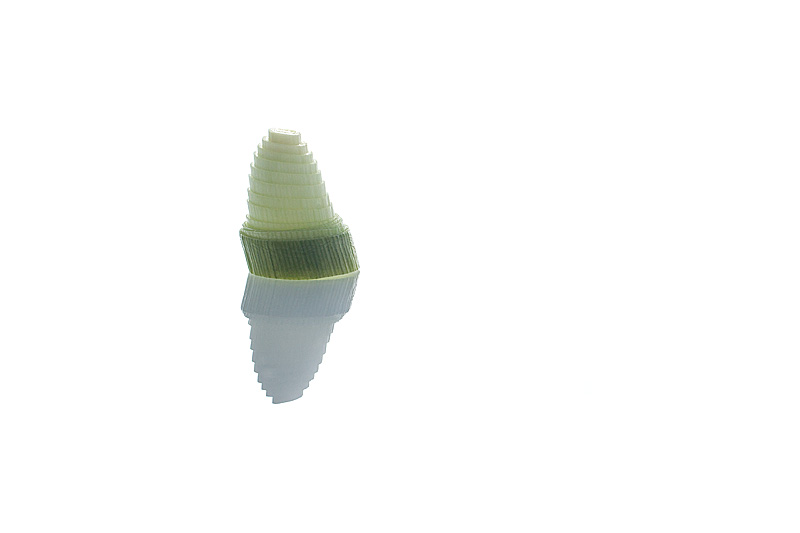
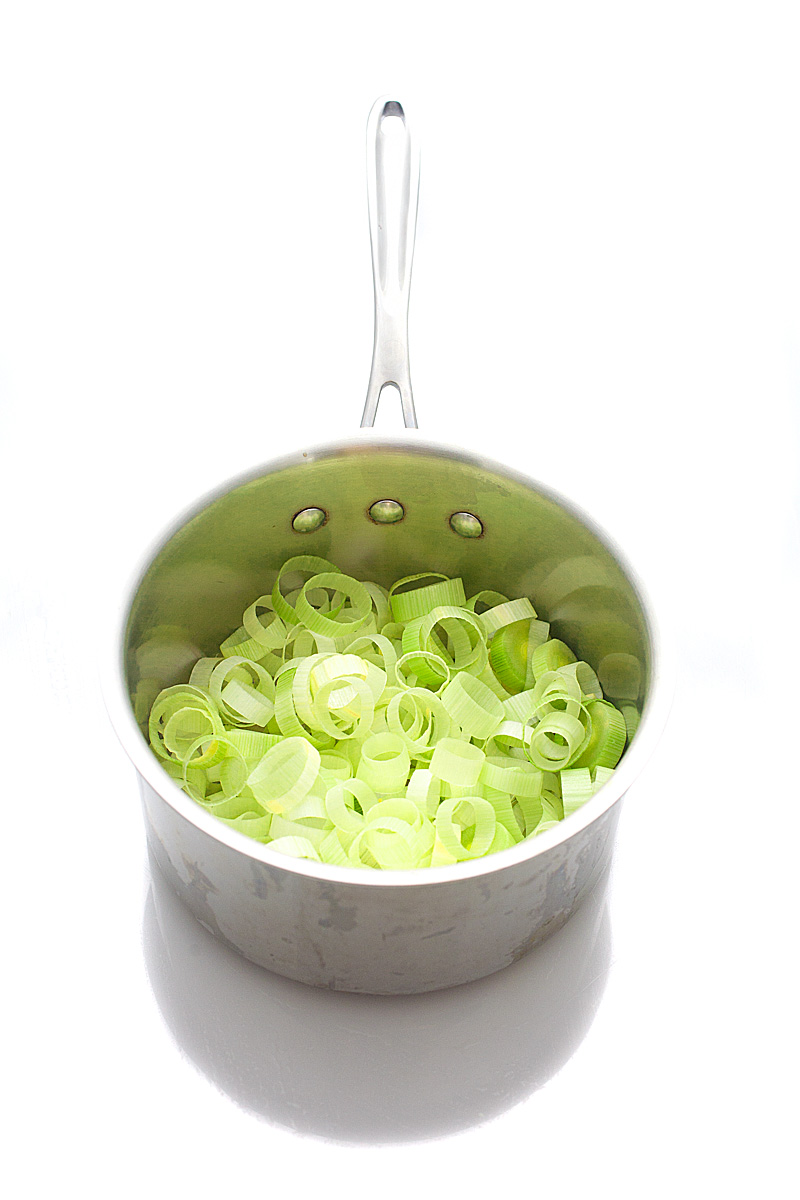
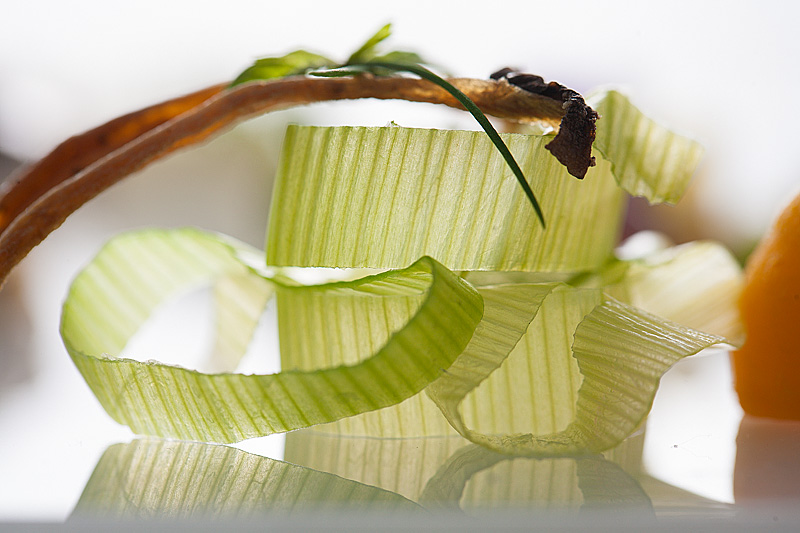
There was the roasting of a beet, done simply by wrapping a red beet in foil with some olive oil and roasting for about an hour, until the beet was cooked through (though it doesn’t go smooshy like a potato…it just gets edibly tender).
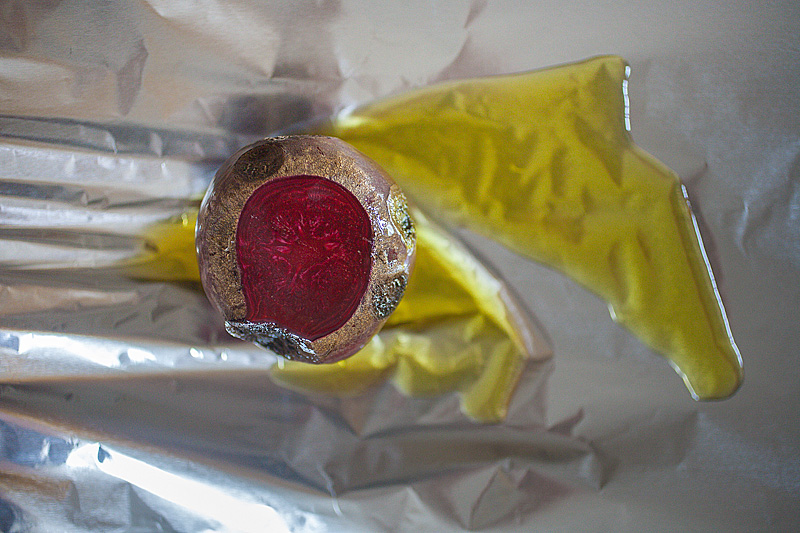
Once roasted, the beets are sliced super-thinly with a meat slicer (or, if you’re like me and bought a meat slicer from Amazon that was a total piece of shit that smoked the first time you used it and then you immediately returned, a mandoline), then trimmed into tidy disks with a round cutter. The discs are folded in half and filled with a delicious puree.
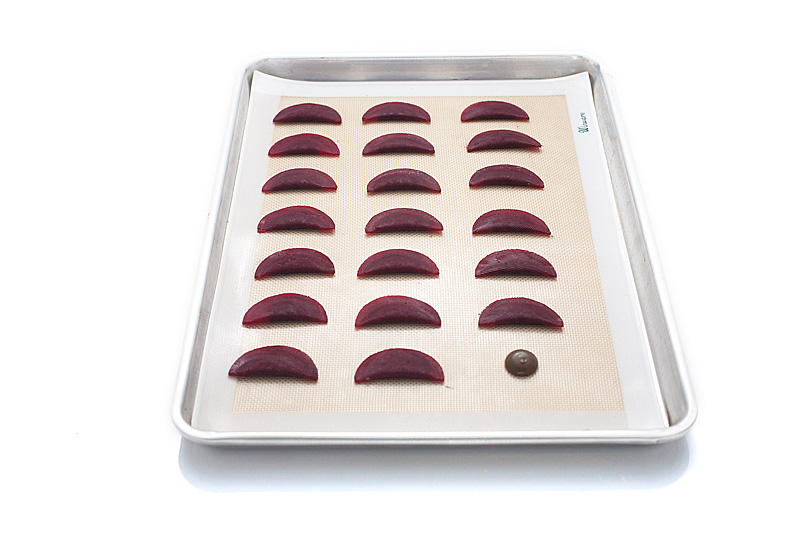
What’s the delicious puree? HOW THOUGHTFUL OF YOU TO ASK! The roasted beet envelopes are filled with Black Truffle puree, and here comes another adventure for you. Black Truffle Puree for this dish is made with black truffle stock (made from scratch in this recipe using several hundred grams of spare black truffle peelings you undoubtedly have lying around, or bought in a tin for the low low price of around $40 if you want to take the cheap route), potato, black trumpet mushrooms, and a quarter pound (!) of fresh Perigord black truffles.
Fresh Perigord black truffles (from Australia, where it’s winter right now and so they’re in season there, or you can opt to buy frozen European black winter truffles held over from 6 months prior) go for around $100/oz for consumer suckers like us, friend. I’m getting married in a few months, but even if I didn’t have such a fantastic reason to save money, the Minister of Finance in our household would NOT let this fly. So what’s the substitute?
Well, I don’t really know. I mean, if one wants (NEEDS) truffles, one can buy preserved (canned) truffles for ‘relatively cheap’, or pre-frozen truffles for ‘less relatively cheap, but still cheaper than fresh’. Another cost-cutting move is opting for the milder Summer truffles as opposed to the headier Winter truffles. Given that I’ve done a bit of learning about truffles earlier in this project, I knew a little about what to expect form my options. Canned truffles are nice but have an unshakeable vibe of “we are but a shadow of our former selves” that makes my tongue a little sad, so for this experiment I decided to ratchet things up a little and try frozen summer truffles. This place in Florida sells 4oz of them for around $40, which was the cheapest I could find them. I know Alinea buys surplus of winter truffles when they’re in season and freezes the excess, so I figured maybe this route would offer relatively better results than I had with the Chicken Skin dish.
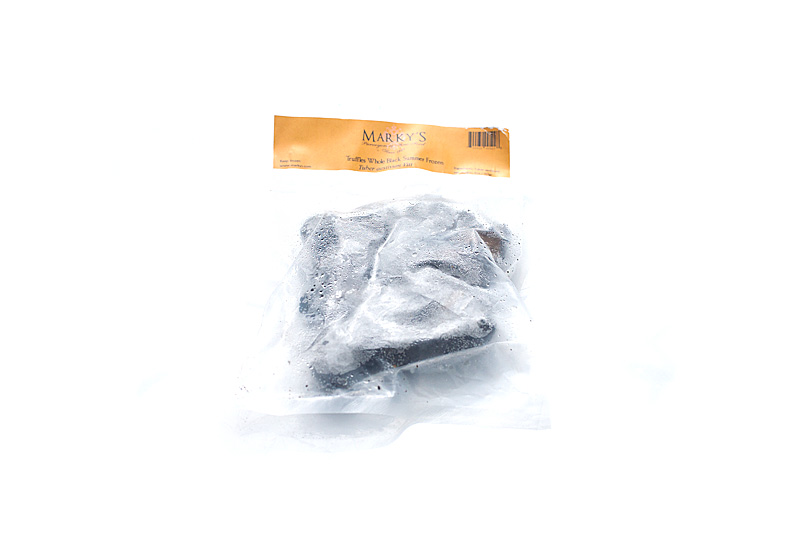
Fresh from the freezer, the summer truffles did indeed have a nice heady aroma. Black Trumpets aren’t in season around here, and because I knew what to expect from buying dried ones, I figured I’d just go offroading a little bit here and improvise by using some other brown mushrooms available in the market. I cooked all this down and pureed it into a thick paste, which smelled really quite lovely. The paste is then dotted onto the beet discs and folded into a pretty ruby-colored package.
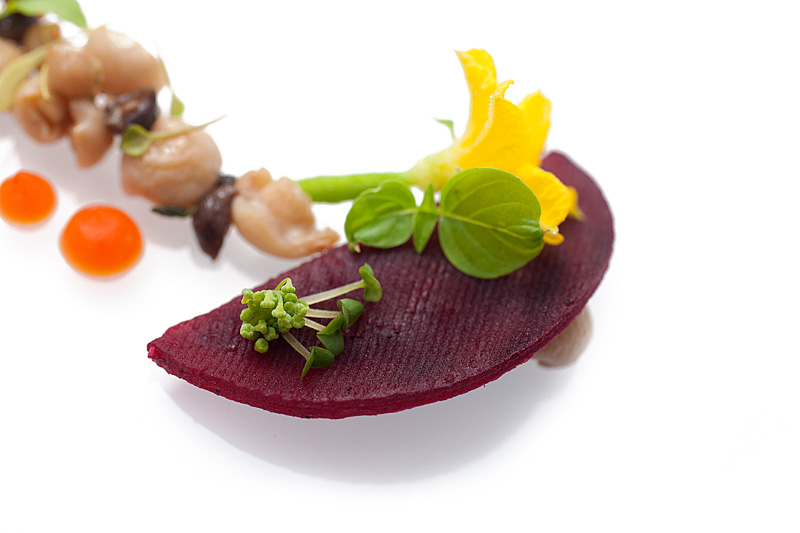
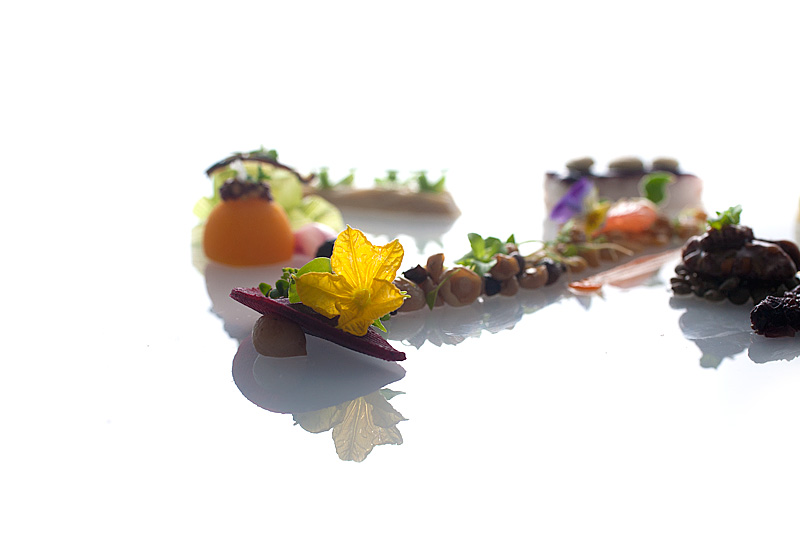
The next step was to cook — in several waves — multiple mushrooms. I started with Clamshell (“beech”, “pioppini”, “shimeji”, all the same) mushrooms…
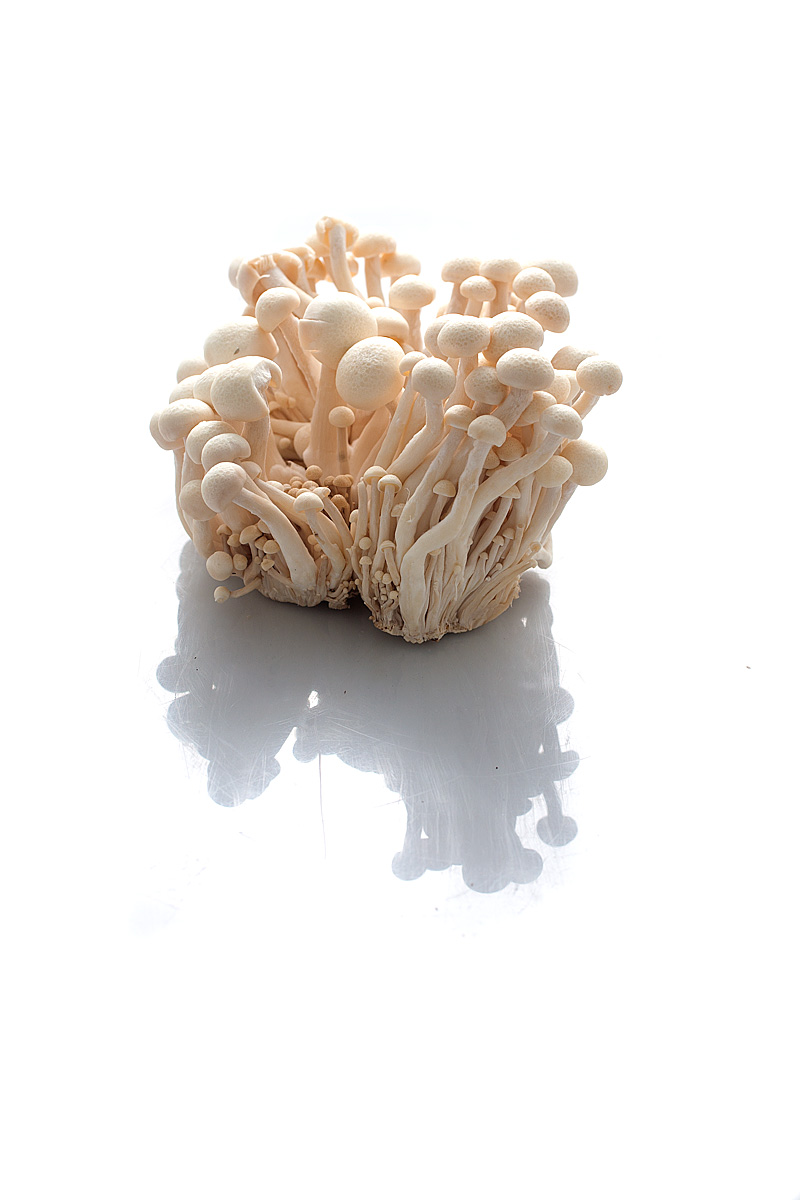
…which are separated into large caps, small caps, and stems (which are diced). Each of these three are individually sauteed with oil, rosemary, thyme, butter, and garlic. They’re then set aside to drain on some paper towels, to be reheated before service.
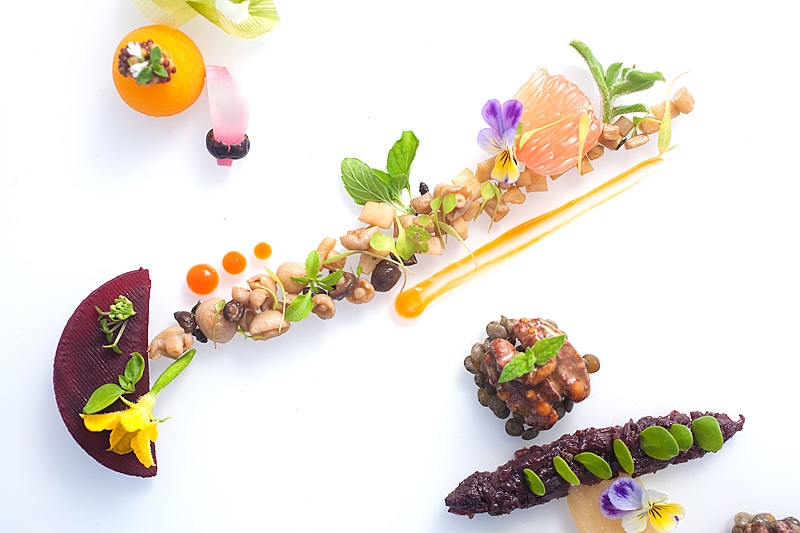
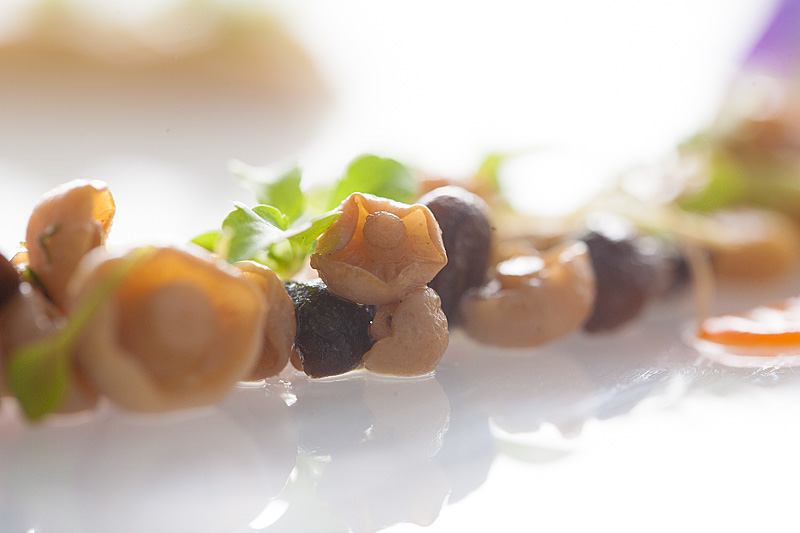
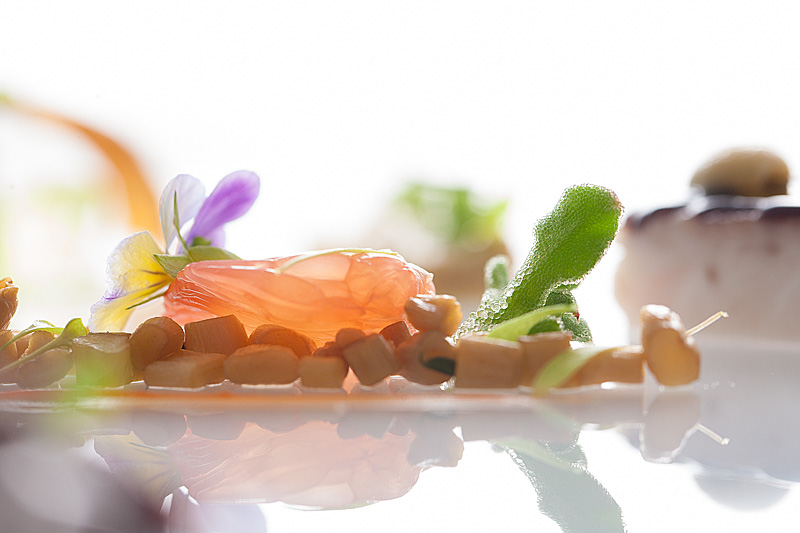
Some Enoki mushrooms were cooked similarly but more-gently, simmered to retain their connection and shape as a cluster. They too were set aside to drain and hold until service.
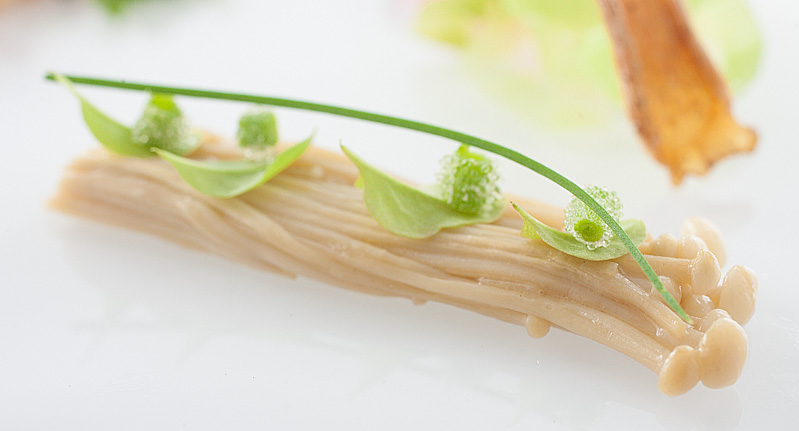
The final step was the striped bass itself. I searched high and low in the bay area for striped bass in fish markets; they’re definitely in season, but no one seemed to carry them. After a while I finally learned that striped bass are sort of like shopping for oxalis at a nursery: they’re so common that they’re just not worth making a big effort to stock apparently. Googling for “striped bass bay area” brings up no Chowhound forum posts, but heaps of fishing location guides. Turns out they’re apparently relatively easy to just catch off piers around here.
This was both incredibly appealing and daunting to me. I mean, how awesome to say “Oh yeah and for the wild bass, I went out and FUCKING CAUGHT MY OWN”? I would totally love to do this. I don’t own any fishing gear though, and there’s the obvious matter of chance here. Choreographing all the rest of this dish along with a fishing excursion was more than I could handle on my own, so I opted to turn again to Browne Trading, since I’d had such a pleasant experience with them last time.
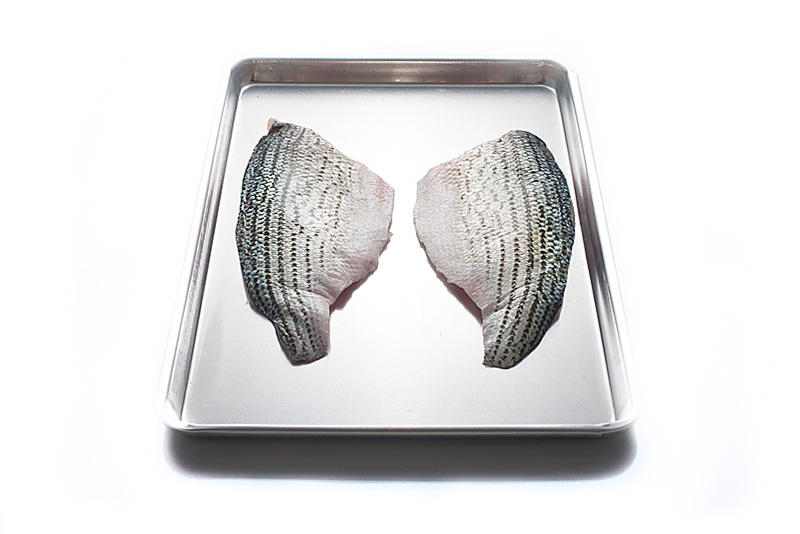
The bass fillets are cut into single portions, each of which is packaged in grapeseed oil and cooked en sous vide very delicately.
The final touch was gathering the various herbs used to garnish this dish. I’m a huge fan of Michel Bras’ gargouillou; I LOVE the idea of it, and there’s a chance to play a little bit with that here. For the past few months I’ve been growing several dozen small herbs for use as garnish here, so finally I got to put them to use. They include nepitella, several basils, oreganos, ice lettuce of two kinds, chive, claytonia, two sorrels, mint, several cresses, and various edible flowers.
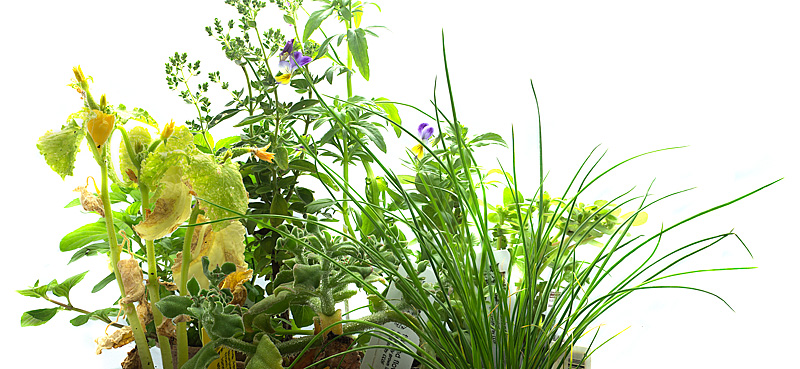
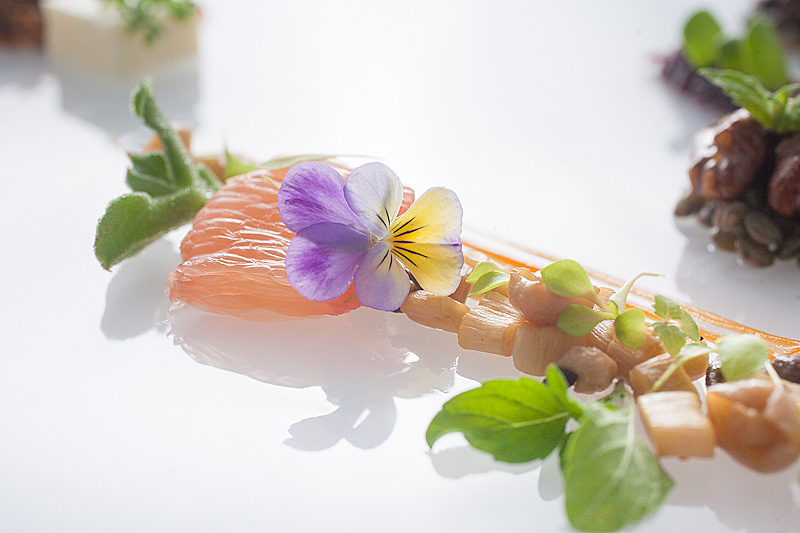
All components prepped, I took a step back to collect myself before assembling everything. There are multiple temperatures to present things at, so there was a lot of reheating/chilling/bringing to room temp and trying to hold it all. The plating in these photos ended up taking about 15 minutes…which of course blew all of these temperatures completely. I realized partway through that this was a new one: I couldn’t actually plate the thing alone and present it the way it’s meant to be presented.
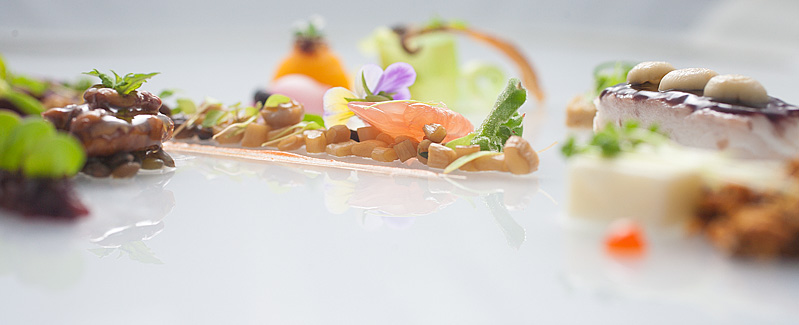
The most tricky stroke came when trying to cap the prepared bass portions with the frozen red wine glaze. The stuff was so incrediblys ticky that it failed to peel from the acetate properly. It made a mess and destroyed a few bass portions (they’re very flaky and delicate once cooked). I had to admit defeat with this and just warm some of the glaze and gently spread it on the portion instead.
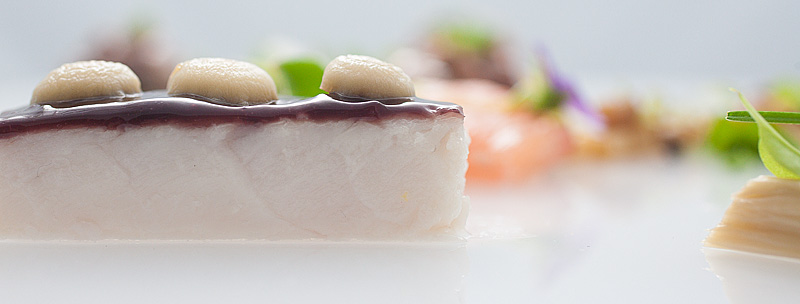
Whew.
So, after all this, how was it?
Well…pretty good! There’s a LOT going on here. The flavors are from all over the place; there’s japanese stuff in here, middle-eastern flavors, really comfort-foody flavors. It’s all over the map. It manages to stay coherent, incredibly, and never dull (well, almost). The beet envelope and truffle puree fell short of what I’d liked; the summer truffles again failed to deliver the punch needed to override the earthy notes of the beet. This really bums me out; I want to be able to afford a proper winter truffle at some point, just to feel satisfied in getting to use one and appreciate how it works. The red wine glaze was so incredibly glue-y that it had almost no flavor release (though the veal stock and red wine mixture pre-ultra-tex both tasted fantastic. This is interesting to me: the ultra-tex not only thickened it, but locked up a LOT of the flavors. The glaze tasted like almost nothing). And the fish itself might as well have been tilapia in the face of all this other stuff…it’s so mild and delicate that, for me, it got lost in the noise.
But the mushrooms were fantastic, the onion and rutabaga were incredibly tasty, and (my personal favorite) the kefir custard with the curried rice were super delicious. The braised bitter leaves were sprightly and exciting. Sarah and I both agreed that maybe the strongest combination on the plate was (surprisingly to both of us) the glazed walnuts atop the lentils. They just tasted…right. Really natural and tasty and ‘of COURSE’-y.
Overall, making this on my own was pretty satisfying; even the things that don’t work out all the way are interesting from a learning perspective.
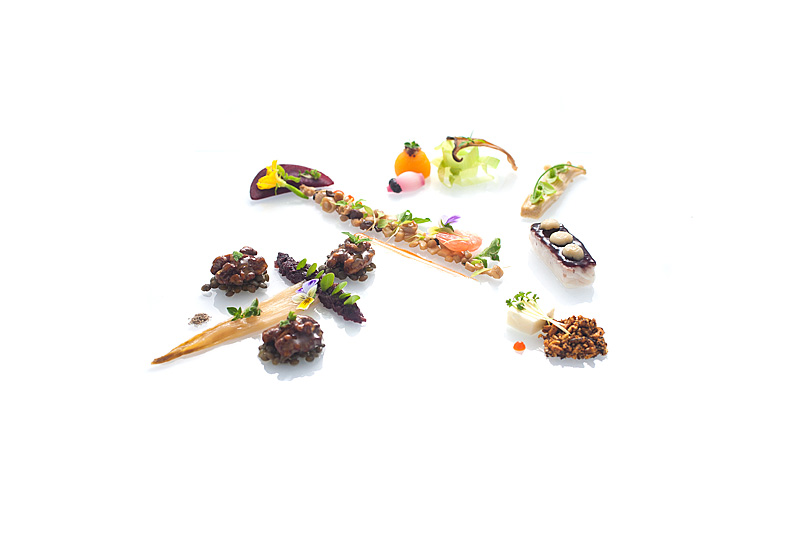
This is just unbelievable — congratulations. A lot of these components seem like they ought to work well in other (less complicated) dishes too. I’m eager to try the walnut/lentil and kefir/rice combos, although 450° oil sounds terrifying.
Oh, and is there a number 6 hidden in one of these shots? The walnuts, maybe?
Thank you sir! Yeah, this one’s really easy to pick apart and make just bits of, to accessorize other dishes. The walnuts and lentils would be awesome components to a nice salad I reckon, as could the curried rice. But, yeah, stay sharp with that oil. 🙂
And also, ARGH! I totally meant to shoot a 6 and then forgot in the heat of it. I hang my head in shame.
I am in awe sir! The pictures, the descriptions..amazing. Have you given any thought to what you will do post project? I have cooked a great deal from the cookbook (did not blog about the misadventures) and have been toying with the idea of recreating some of the dishes not included in the cookbook, but based on peoples descriptive postings all over the internet.
Hey thanks Justin!
Actually, I too would like doing something a little more investigative/exploratory and less ‘read some instructions and follow them’ after completing this. I don’t know how formalized I’ll be about this, but given how satisfying I’ve found this project so far, I’d love to continue in the same vein. We’ll see! I’d dig seeing/hearing about what you come up with in your own explorations as well!